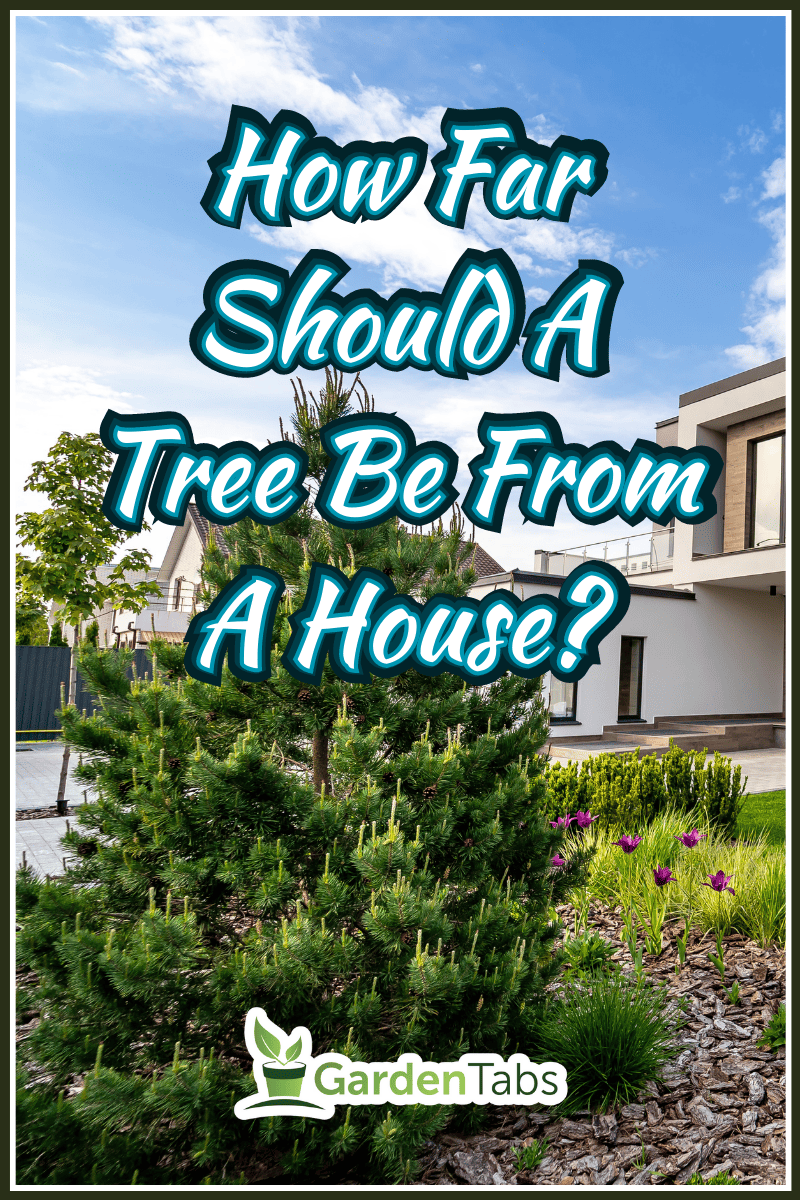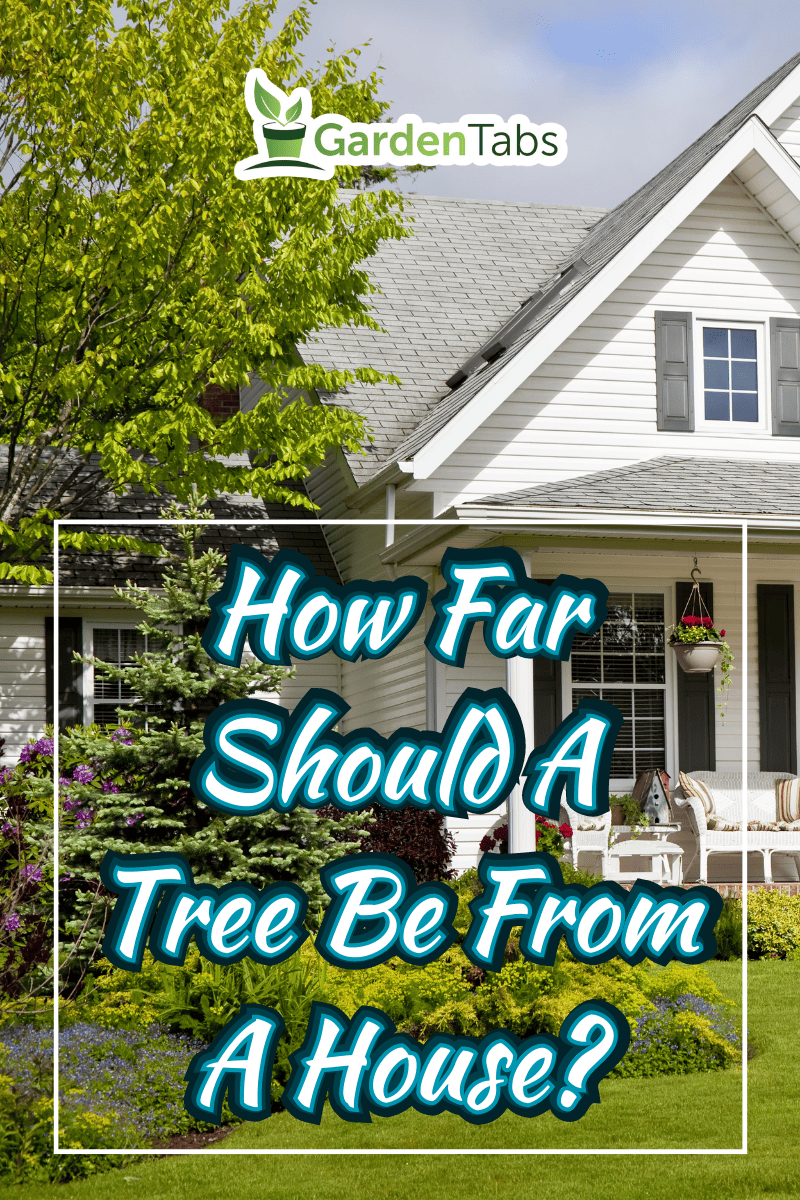Figuring out where everything in your garden should go can sometimes feel endless. Do you want to plant a tree, or many, near your house and have no idea what spacing you should follow? How far should a tree be from your home? What about other structures?
We will answer all of these questions throughout this article. Let's dive in!
You want to plant a tree 15-20 feet away from your home. That said, smaller trees can usually go closer to a house (ten or more feet), so that's something to consider.
The reasoning for this spacing is that the roots from a tree can become large and eventually damage the structure of your home.
To prevent this, you need to give your tree enough room to develop roots, all without having them break through any foundation.
As we start, we will cover all things planting trees near your house and give insight on how to care for the ones throughout your landscaping. Whether you recently moved or want to spruce things up, we're here to offer some help. With that said, let's get right into this topic below!
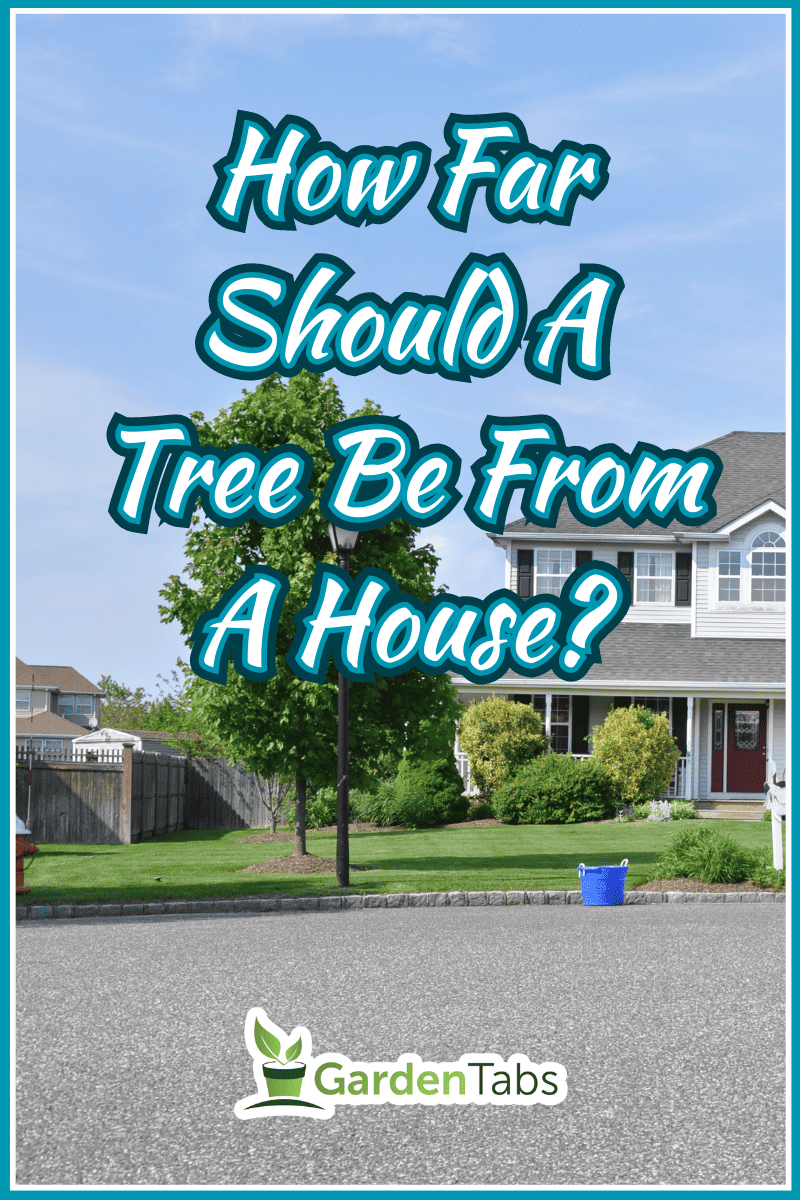
How Close Can A Tree Be To A House?
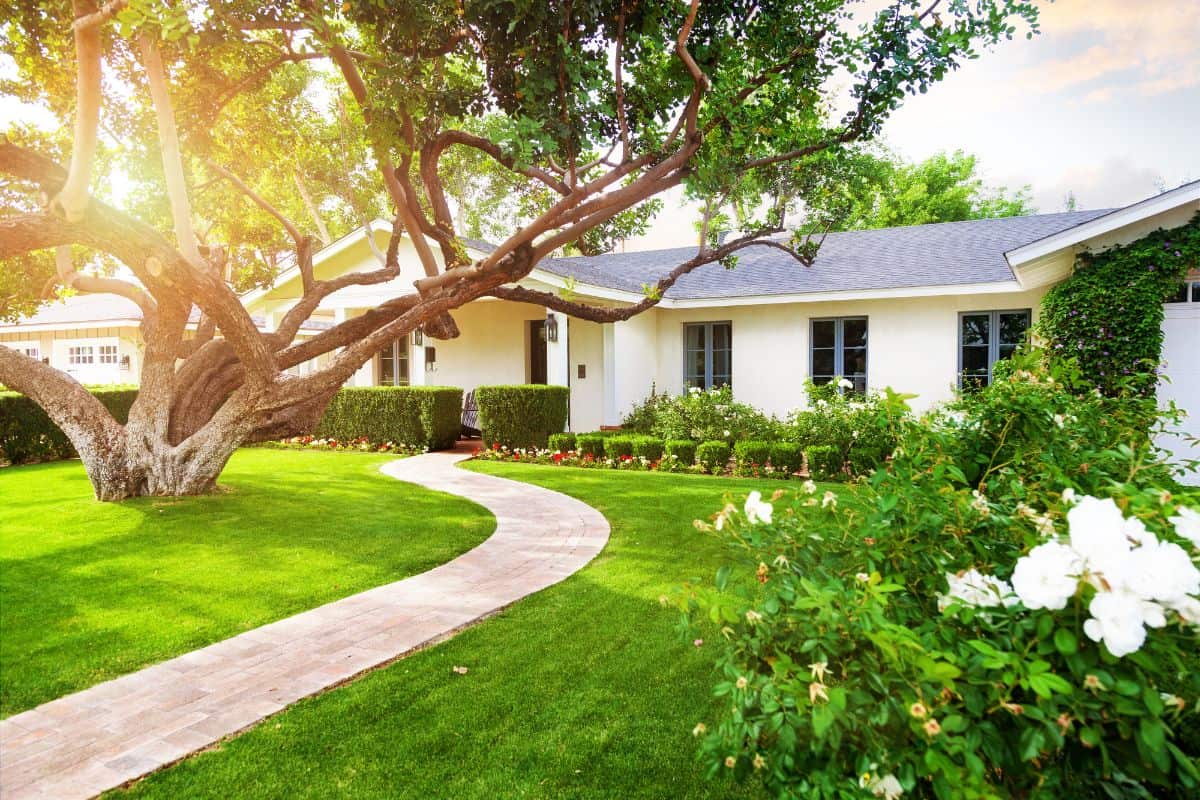
Generally, you don't want a tree to be closer than 15 feet to your house. Especially if you plant a massive species (one that grows taller than 60 feet), it's ideal for giving it around 20 or more feet of wiggle room.
As we mentioned, the roots of a tree will develop and eventually sprawl underneath the ground's surface. Therefore, issues will likely arise if your tree is too close to your home.
Although unfortunate, many homeowners see the trees in their yard start to affect the foundation of their houses as time goes on.
This can be cracking, shifting, or even a complete loss of a specific section. Remember, roots, although tiny on their own, can be devastating to a structure once they're mature.
On the other hand, if you plant a smaller tree variety that doesn't have aggressive roots, you should be able to get away with placing it closer to your property.
So, this all comes down to root behavior, tree size, and even ground type.
Can Tree Roots Damage A Houses Foundation?
Yes. As we covered above, larger tree roots can latch onto a home's foundation and wreak havoc. Especially if you decide to plant a large, possibly invasive tree beside your property, the chances of its roots causing trouble are very high.
In general, roots are very opportunistic. If they have somewhere they can grow, even uninvited, they will take that initiative.
According to Purdue University, tree roots tend to favor "friable" soils and mulch as they develop, so the type of conditions you provide them can also affect this.
Suppose you want to plant a smaller shrub-like tree beside your house. If it doesn't have invasive tendencies and doesn't get very tall, its roots aren't likely going to cause damage to the foundation of your home.
On the other hand, if you decide to plant a massive oak tree or a weeping willow, it's more likely that their roots will make their way into your house's structural support.
So, we recommend even going as far as 25-30 feet if you can.
Should I Remove A Tree That's Close To My Home?
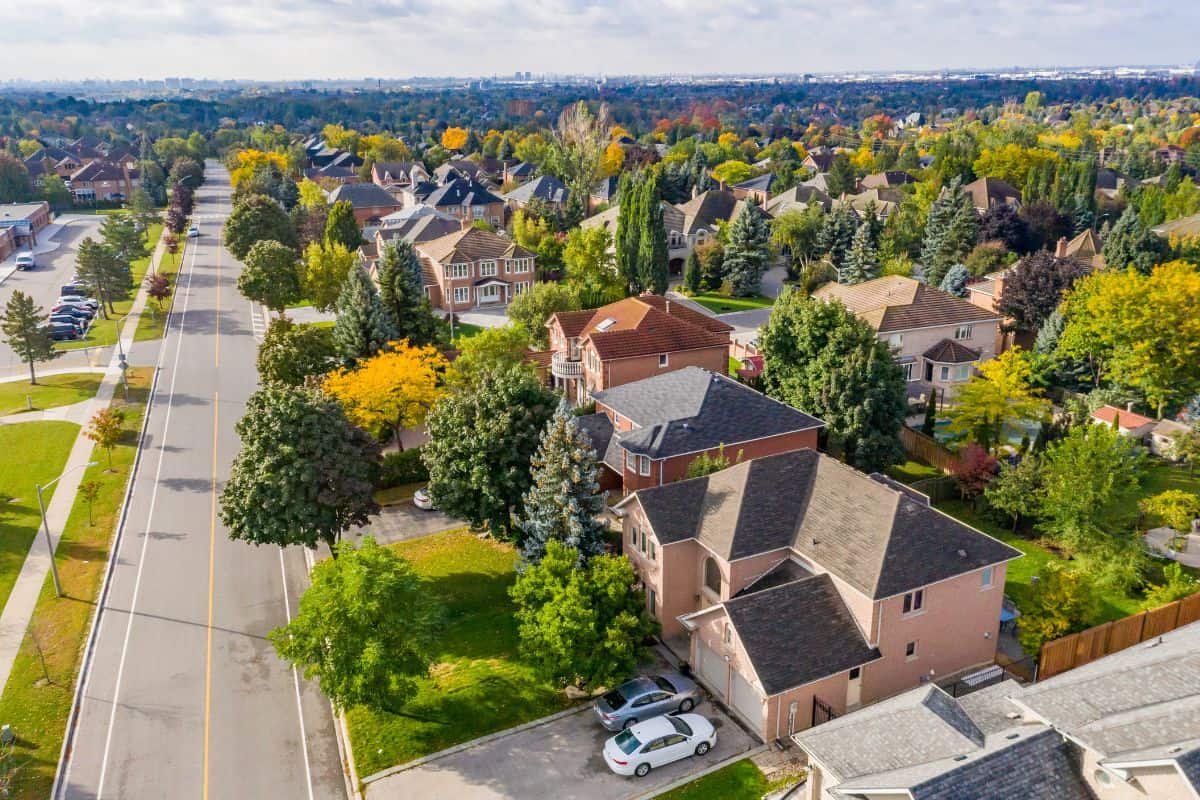
If the tree you're worried about is hanging over your roof or causing structural damage to your home, it's time to remove it. Although removing a tree can be upsetting, you need to consider your home's safety.
For example, if you notice cracking along the exterior walls of your house, this could mean the roots from the tree have penetrated the surface and are applying unnecessary pressure.
Not only is this expensive to repair, but it also puts you and your family/roommates in danger.
Before removing a tree and deciding this is the best course of action, there are also a few factors to consider. These include:
- Do you see foundational damage (cracking, shifting, sinking)?
- Have any limbs from your tree fallen onto your house?
- Do you live somewhere with heavy winds/frequent storms?
- Have you noticed more pests inside your home?
- Are there more pest birds (woodpeckers) present?
If you answer yes to these questions, it could be time to remove your tree.
On the other hand, some experts warn against removing trees if they're close to a home. For example, the team at Design Tree warns against doing this too abruptly, as you can disrupt the soil nearby.
They mention how this soil is the same ground your home rests on, so removing a larger tree too aggressively could cause further damage to your foundation.
So, we recommend reaching out to a contractor and seeing their professional opinion.
How Likely Is It For A Tree To Fall?
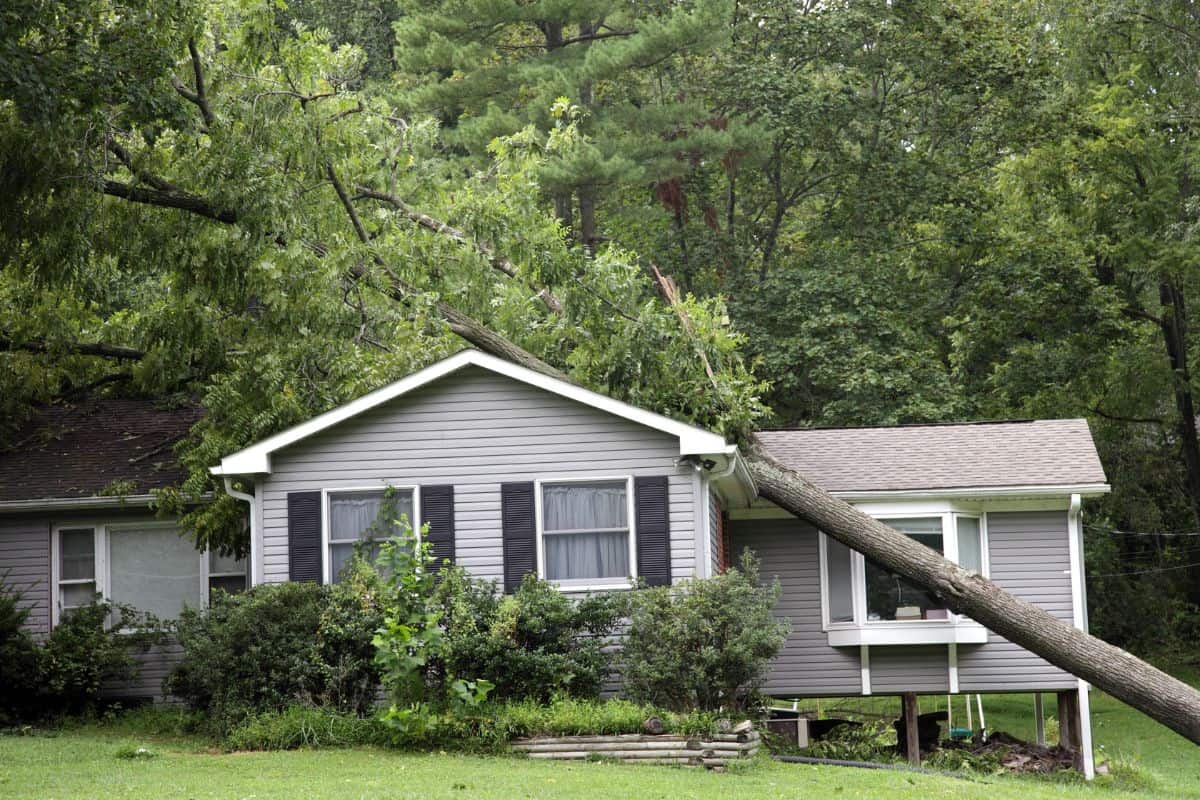
For those worried about the tree near their house, the chances of it falling are slim. Considering that there is roughly a 12% chance your tree naturally topples over, this won't always be something to have to prepare for.
However, if you are somewhere with extreme weather (tornados, hurricanes, etc.), you always want to have a game plan for the trees in your landscaping.
As we covered before, smaller trees pose less risk root-wise, but they also pose less damage if they fall. Think about a smaller flowering tree falling into your home versus a 60-foot oak tree.
The damage won't be severe and might not even require any significant repairs.
With that said, it can be helpful to know the warning signs of a falling tree:
- Cracked or heaving soil nearby.
- Cracking along the trunk of your tree.
- Largely exposed roots that were previously underground.
- Damaged bark around the base of your tree.
Again, it's more likely for a newly planted or less established tree to topple over in high winds, so you shouldn't need to worry if your tree has survived many instances of this.
You should try to keep a reasonable distance between your trees and house, regardless, so if one falls, the damage isn't devastating.
How Close Can I Plant An Oak Tree To My House?

Ideally, you should plant an oak tree 20-30 feet away from your home. As we mentioned, oaks are relatively large trees and can develop extensive root systems.
It's worth noting that a mature oak can develop a spread over 120 feet, so this tree is not one you want directly next to your house.
Oaks also tend to drop their branches during high winds, which, although it doesn't sound bad, can cause extreme damage.
This tree species is also notorious for damaging sidewalks, walls, and foundations nearby, so when in doubt, give your oak plenty of space to sprawl and grow damage-free.
How Close Can I Plant A Eucalyptus Tree To My Home?
Moving onto Eucalyptus trees, you also want to leave space between one and your house. This tree will generally have a sprawling root system, so try to give it at least 20 feet of room.
Like an oak tree, a eucalyptus tree will also have sprawling branches and get very big, so the farther you keep it away from any structures, the better.
One thing to remember about this species is that its lateral roots can spread upwards of 100 feet. Unfortunately, eucalyptus roots love ditches, plumbing pipes, and septic tanks, which can quickly become a major repair you'll need to pay for.
It's common for homeowners to notice these trees cracking the foundation of their properties if it's too close, so the more room, the better off you are.
How Close Can A Pine Tree Be To A House?
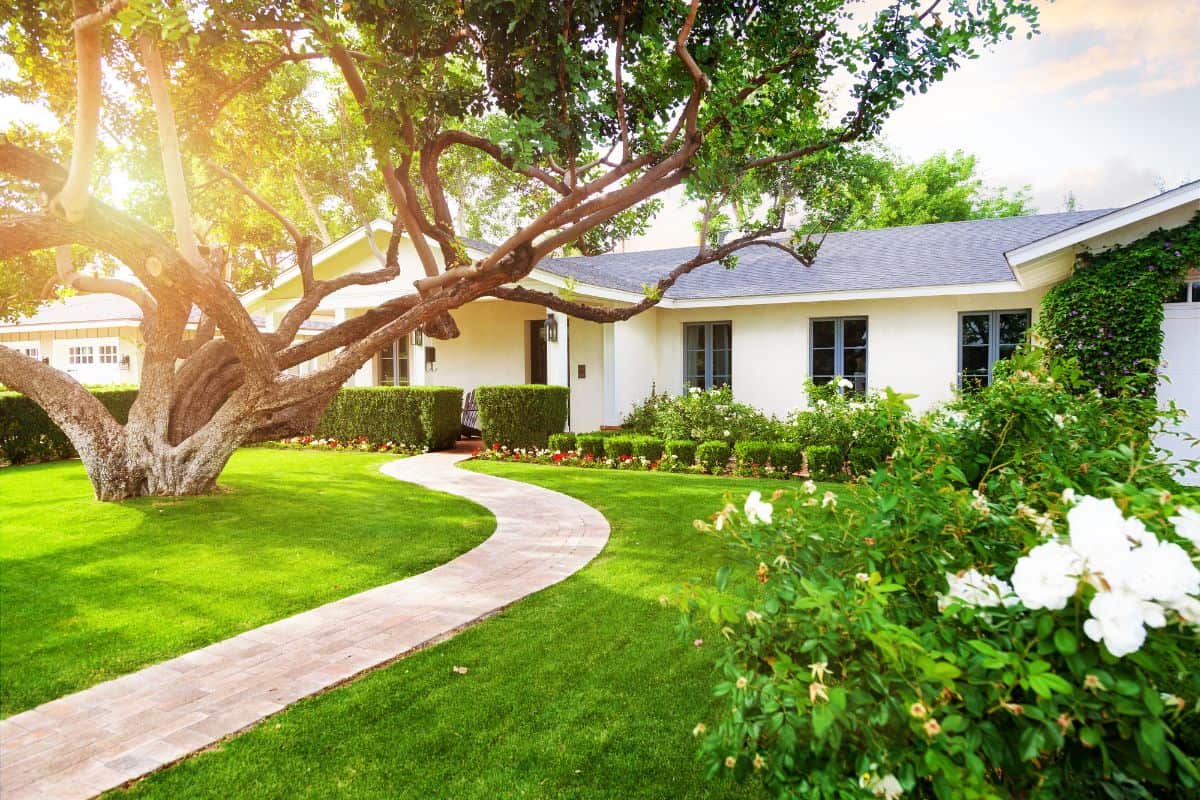
For those wanting to grow a pine tree near their home, we recommend leaving around 20-25 feet of space. However, some experts recommend more than 50 feet depending on the variety, which can vary.
One common rule is to give your tree roughly half its mature height in-ground space. That means if your pine becomes 100 feet tall, you want to leave 50 feet between it and your property.
Again, this isn't always necessary, but following stricter spacing can help prevent any issues. Like the other trees we mentioned, pines will also develop robust root systems and have vast spreads.
It's also important to understand that most pine trees will have roots that grow downward. Therefore, many pine varieties won't necessarily pose a risk to your foundation, but that's not an excuse for them to be right next to your house.
How Far Should A Weeping Willow Be From A Home?
Although this tree species doesn't have an invasive root system, it can still wreak havoc on your house. Therefore, we recommend giving your weeping willow 20 or more feet of room away from any nearby homes or structures.
Notably, weeping willow roots can spread three times as far as their overall height. Although their roots are shallow, they can crack sidewalks, walls, and even the foundation of a property.
Southern Living warns against having a weeping willow too close to water lines, as this is where its roots tend to congregate.
So, if possible, try to give a willow extra room to sprawl and mature.
To Finish Things Up

Whether you want to plant a tree beside your house or already have a few growing, it's always good to know the proper spacing. We found that you want to leave around 15-20 feet between a tree and your home.
However, if you have a larger tree you want to grow, it could be best to leave upwards of 30-50 feet between the two. This all comes down to canopy size, root habits, and your climate.
Luckily, as long as you follow these recommendations, you shouldn't run into any issues, so good luck with your landscaping!
Made it to the end? Check out these helpful related articles below!

